Lake kutubu rainbowfish - Melanotaenia lacustris
Scientific name: Melanotaenia lacustris
Common name: Lake kutubu rainbowfish
Family: Melanotaeniidae
Usual size in fish tanks: 11 - 13 cm (4.33 - 5.12 inch)
014
Recommended pH range: 7.4 - 8.4
Recommended water hardness: 10 - 18°N (178.57 - 321.43ppm)
0°C 32°F30°C 86°F
Recommended temperature range: 24 - 27 °C (75.2 - 80.6°F)
The way how these fish reproduce: Spawning
Where the species comes from: Oceania
Temperament to its own species: peaceful
Temperament toward other fish species: peaceful
Usual place in the tank: Middle levels
General Information
The Lake Kutubu Rainbowfish (Melanotaenia lacustris) is a robust, schooling rainbowfish endemic to Lake Kutubu and its outlet (Soro/Kikori system) in Papua New Guinea. Adults commonly reach 11–13 cm in aquaria. In nature they inhabit very clear, still to slow waters with aquatic vegetation, submerged roots and logs, congregating mid–upper water. Note: the species is assessed as Endangered (IUCN); choose sustainably sourced stock.
Food & Feeding
Omnivore. Use quality spirulina/algae-rich flakes or small pellets as the staple and rotate frozen/live foods (daphnia, Artemia, mysis; bloodworms in moderation). Offer small portions 1–2× daily to maintain water quality and colour without overloading filtration.
Sexing
Males develop deeper bodies with more intense turquoise/blue and reddish/orange in the fins; females remain slimmer and paler. Juveniles look similar until maturity.
Breeding
A classic egg-scattering, plant/mop spawner that will deposit small adhesive eggs over days rather than in one event. For controlled spawning, use spawning mops or fine-leaved plants in a separate, dim tank. Remove mops/eggs or the adults post-spawn. Eggs typically hatch in ~7–8 days (temperature dependent); start fry on infusoria/microfoods, then newly hatched brine shrimp. Avoid messy egg-yolk feeds.
Lifespan
Commonly 5–8 years with excellent water quality, oxygenation and a varied diet.
Tank Requirements & Water Parameters
- Tank size: active shoaler—use a long tank of at least 120 cm / 4′ for a group (6–8 ), with open lanes and planted margins.
- Water chemistry (key): prefers hard, alkaline water. Lake Kutubu itself runs about pH 7.6–8.1 with measurable mineral content; aim for pH ~7.4–8.4, GH/KH in the mid–high range. Stability matters more than the absolute number.
- Temperature: 24–27 °C (75–81 °F) is ideal; tolerates roughly 21–25 °C on the cooler side.
- Filtration & flow: strong biofiltration and oxygenation; minimal to moderate current to mimic clear lake conditions.
- Aquascape: plants, wood/roots and smooth rock with large open water zones; tight-fitting lid recommended for lively shoals.
- Maintenance: weekly water changes; avoid abrupt parameter swings.
Compatibility & Tank Mates
Peaceful, fast-moving shoaler. Keep in groups of 6–8 to show best colour and reduce sparring. Suitable with other medium rainbowfishes, robust rasboras/barbs, larger tetras, and peaceful catfishes. Avoid tiny, very slow or long-finned species that may be stressed by activity.
Behaviour & Usual Place in the Tank
Occupies the middle (to upper) water column and appreciates strong light and clear water for display; retreats among plants and wood when startled.
Short Description
Lake Kutubu Rainbowfish is a striking, endangered PNG endemic that thrives in hard, alkaline, clear water with space to school. Provide a long tank, stable high-quality water, a mixed omnivorous diet, and spawning mops if you wish to breed them.
Pictures
Bought by aqua-fish.net from jjphoto.dk. Other pictures were provided by Michael. Also thanks to Jonathon Whipple.
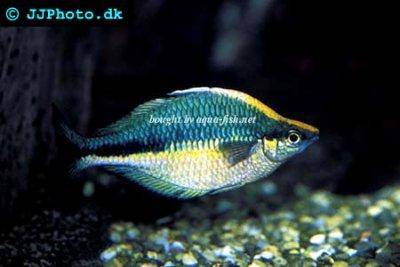





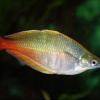 Bleher’s
Bleher’s 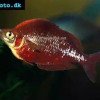 Red
Red 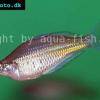 Ramu
Ramu 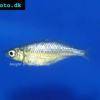 Wanam
Wanam 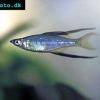 Threadfin
Threadfin 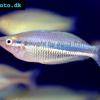 New
New 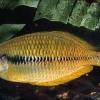 Yakati
Yakati 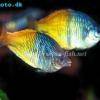 Boesemani
Boesemani 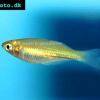 Crimson
Crimson 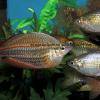 Australian
Australian 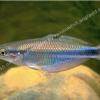 Goldie
Goldie 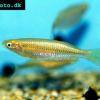 Slender
Slender 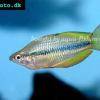 Lake
Lake 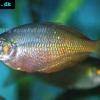 Irian
Irian 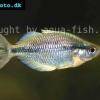 Kamaka
Kamaka 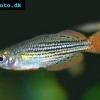 Dwarf
Dwarf 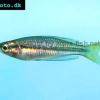 Black
Black 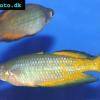 Parkinsoni
Parkinsoni 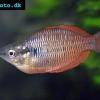 Sunset
Sunset 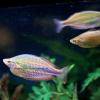 Neon
Neon 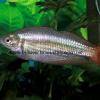 Western
Western 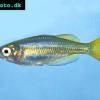 Inornate
Inornate 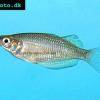 Ruby
Ruby 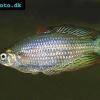 Eastern
Eastern 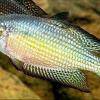 Desert
Desert 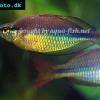 Regal
Regal